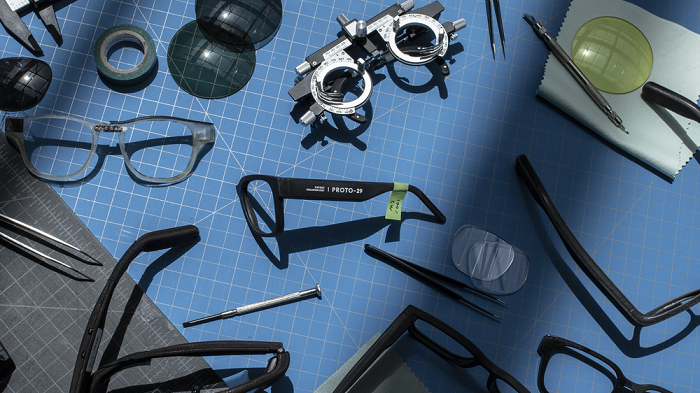AR glasses are coming, and while Meta, Apple and Snap all continue to develop their new digitally-enabled devices, Google too is also looking to advance its AR efforts, with public testing of its AR glasses getting underway soon.

As explained by Google:
“Starting next month, we plan to test AR prototypes in the real world. This will allow us to better understand how these devices can help people in their everyday lives. And as we develop experiences like AR navigation, it will help us take factors such as weather and busy intersections into account – which can be difficult, sometimes impossible, to fully recreate indoors.”
Google hasn’t shared any new images of its AR device – other than the frames in development above – but it did provide this video of its in-development ‘Proto-29’ AR glasses at its I/O conference earlier this year.
From Google’s description, it sounds like these are the glasses that it’ll be trialing, with AR prototypes ‘that look like normal glasses with an in-lens display and visual and audio sensors’.
The testing will be limited to select areas in the US, with strict limitations on where testers can operate, and the kinds of activities they can engage in.
In other words, San Francisco – the testing will be conducted in San Francisco, around the Mountain View headquarters of the search giant (note, this is purely my own speculation, Google hasn’t specified the areas where it will be testing).
“We’ll begin small-scale testing in public settings with AR prototypes worn by a few dozen Googlers and select trusted testers. These prototypes will include in-lens displays, microphones and cameras – but they’ll have strict limitations on what they can do. For example, our AR prototypes don’t support photography and videography, though image data will be used to enable experiences like translating the menu in front of you or showing you directions to a nearby coffee shop.”
Google says that it’ll be testing translation, transcription and navigation elements, while also getting a better sense of how the glasses perform in the real world, as opposed to the enclosed lab environment.
It’s another step towards the AR-enabled future, where we’ll all eventually have heads-up digital displays overlaid on our vision at all times. Which seems like it could lead to information overload. I mean, our attention spans have already evolved due to advances in connectivity, with trends like short-form video likely pushing this even further, enabling people to process more and more information at faster speeds.
Having similar prompts and pointers, at all times, will accelerate that even further again, and while most people like the concept of having their own Iron Man-like display of info in front of their eyes, it’ll be interesting to see how this develops in practice, and what that means for broader consumption trends.
Will our brains ever be able to shut off, and what will that do for our health? Will Refresh and Visine see a sudden increase in sales, due to overworked eyes?
Will AR open up all new opportunities for ads and promotions, directly in front of people as they look at your store – and how will that impact best practices and processes in the broader digital ads industry?
There’s a heap of questions, which will likely take years to answer, but it is getting closer, with various AR glasses moving ever-nearer to release.



